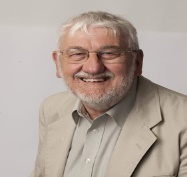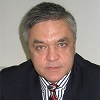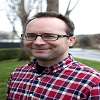Biography:
Sergey Suchkov graduated from Astrakhan State Medical University and awarded with MD, then in 1985 maintained his PhD at the I M Sechenov Moscow Medical
Academy and in 2001, he maintained his Doctorship Degree at the Nat Inst of Immunology, Russia. From 1987 through 1989, he was a senior Researcher, Koltzov Inst
of Developmental Biology. From 1989 through 1995, he was a Head of the Lab of Clinical Immunology, Helmholtz Eye research Institute in Moscow. From 1995 through
2004, he was a Chair of the Dept. for Clinical Immunology, Moscow Clinical Research Institute. He has been trained at: NIH; Wills Eye Hospital, PA, USA; Univ. of Florida
in Gainesville; UCSF, S-F, CA, USA; Johns Hopkins University, Baltimore, MD, USA. He was an Exe Secretary-in-Chief of the Editorial Board, Biomedical Science, an
international journal published jointly by the USSR Academy of Sciences and the Royal Society of Chemistry, UK. At present, he is a Chair, Dept. for Personal-ized and
Translational Medicine, I M Sechenov First Moscow State Medical University. He is a member of the New York Academy of Sciences, USA; American Chemical Society
(ACS), USA; American Heart Association (AHA), USA; EPMA (European Association for Predictive, Preventive and Personalized Medicine), Brussels, EU; ARVO (American
Association for Research in Vision and Ophthalmology); ISER (International Society for Eye Re-search); PMC (Personalized Medicine Coalition), Washington, USA.
Abstract:
Personalized medicine (PM) as the healthcare of the future represents an innovative model for advanced healthcare and
robust platform for relevant industrial branches for diagnostics and pharmaceutics. However, rapid market penetration
of new technologies demands the implementation of reforms not only in biopharma, but also in education. Th erefore, the
problem of the updated education of specialists in bioengineering, drug design and affi liated fi elds is becoming particularly
urgent, and it requires signifi cant revision of newer programs and curricula to be updated. Modernization and integration of
widely accepted standards require consolidation of both the natural and medical sciences that may become the conceptual
basis for the biopharma education. Th e main goal of this training is to provide development of novel multifaceted approaches
to build academic schools for future generations. So, a higher, secondary and primary education as a trio should be integrated
into the circuit. Based on current trends and own experience, we have made the fi rst steps towards reshuffl ing the canonical
educational tandem “School-University” and restructuring of specialized groups (with targeted disciplines) to get the mentees
to be involved into having the existing healthcare system advanced and stepped forward. Moreover, non-canonical approach
has been used to create a team of young researchers and biopharma students which has been recognized as Th e International
Research Team of Youngsters under the aegis of EPMA (Brussels, EU) and ISPM (Tokyo, Japan). Th e integration of the primary
and secondary education provides: 1. development in the chosen direction; and 2. optimization of the jointly set activity of a
student and the teacher within a pair or a tandem (mentor-mentee). Th e above-mentioned has pre-determining value, because
under the disintegration of the world community expressed the competition in quality of the scientifi c intellect dramatically
increases. Th e same occurs in the areas of quality of all of three segments of the educational process, i.e., pre-college (secondary
school), university and graduate.




